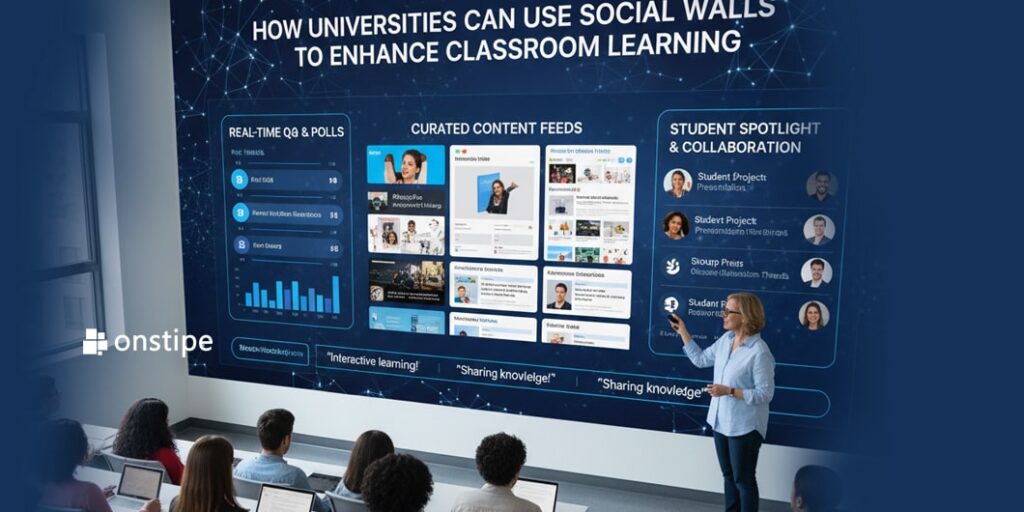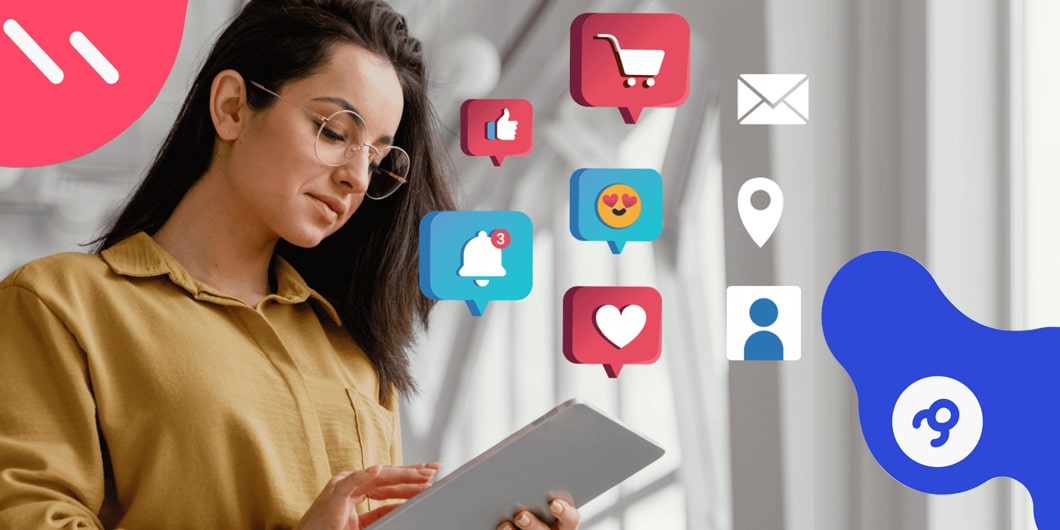In today’s digital age, traditional classroom learning is evolving rapidly. Universities are continuously exploring innovative tools and strategies to make lectures more interactive, collaborative, and engaging. One such tool gaining popularity is the social wall—a platform that aggregates content from multiple social media sources into a single, real-time display. Social walls can transform the way students participate in class discussions, showcase projects, and collaborate on assignments, providing a dynamic learning experience that goes beyond the conventional lecture format.
Social walls not only allow students to share ideas publicly but also encourage deeper reflection on their learning. Students can post questions, insights, or helpful resources related to the course in real time, creating a dynamic discussion feed. This is especially useful for those balancing multiple tasks, such as conducting research or preparing for exams. Even students who are hesitant to speak up in class can contribute meaningfully through the social wall. For students seeking extra guidance on assignments, prompts for “write my paper online” can be added on the wall, providing access to reliable academic resources and helping them manage their workload more efficiently.
1. Encouraging Real-Time Participation
One of the primary benefits of social walls is their ability to boost student participation. Instead of waiting for turn-based discussions, students can post their thoughts immediately, and instructors can respond instantly. For large lectures, where it’s difficult for every student to speak up, social walls provide an inclusive platform. Professors can display a live feed of student questions, polls, or comments on the projector, ensuring that everyone’s voice is heard. This approach not only increases engagement but also encourages students to think critically about their contributions before posting.
2. Integrating Multimedia Content
Social walls are not limited to text posts—they support images, videos, links, and hashtags. This multimedia integration allows students to share visual learning aids, infographics, or video summaries of complex topics. For instance, in a history lecture, students might post images of historical artifacts or short video explanations to support their arguments. Science or engineering classes can use diagrams, experiment photos, or simulation videos. By aggregating these resources in one place, social walls create a collaborative repository of learning materials that all students can access and benefit from.
3. Facilitating Collaborative Learning
Collaborative learning is a cornerstone of higher education, and social walls make it easier than ever. Students can work together on projects by sharing updates, research links, and drafts in real time. Group assignments, study sessions, or peer review exercises can be coordinated efficiently through the social wall. Instructors can monitor the discussions, provide feedback, and encourage students to build on each other’s ideas. This constant interaction fosters a sense of community in the classroom, even in hybrid or online learning environments.
4. Supporting Remote and Hybrid Learning
With the rise of online and hybrid learning models, social walls bridge the gap between on-campus and remote students. They provide a unified platform where all participants can contribute equally, regardless of location. This ensures that remote learners are not left out of class discussions and can actively engage with peers and instructors. Moreover, social walls can integrate with learning management systems (LMS), making it easier to track participation, collect assignments, and share important announcements in one place.
5. Encouraging Peer-to-Peer Feedback
Another significant advantage of social walls is the opportunity for peer-to-peer feedback. Students can post their drafts, project ideas, or research findings, and classmates can comment, provide suggestions, or share additional resources. This collaborative feedback mechanism encourages critical thinking and allows students to learn from one another. When used effectively, it can reduce the dependency on instructors for every question, promoting autonomy and problem-solving skills.
6. Tracking Engagement and Participation
For educators, one challenge is measuring how actively students engage with the course material. Social walls provide analytics that track posts, comments, and interactions, giving instructors a clear view of participation levels. By analyzing this data, professors can identify students who might need additional support or adjust their teaching methods to improve engagement. This feature makes social walls a valuable tool for both teaching and assessment.
7. Showcasing Student Work
Social walls also serve as a platform to celebrate and showcase student achievements. Assignments, presentations, or creative projects can be displayed publicly, motivating students to produce high-quality work. Recognition through peer appreciation and instructor acknowledgment can boost confidence and create a more positive learning environment. Additionally, archived social wall content can serve as a reference library for future cohorts, allowing them to learn from past projects and discussions.
Conclusion
Social walls are revolutionizing classroom learning by creating an interactive, collaborative, and engaging environment. They encourage real-time participation, multimedia sharing, peer feedback, and academic recognition, making the learning experience more dynamic and inclusive. By integrating social walls into lectures and assignments, universities can foster a sense of community, enhance student engagement, and support both in-person and remote learners. For students navigating complex academic requirements, social walls can also provide indirect support, such as linking to helpful resources or prompts like “write my paper online” for guidance. This ensures that students stay on track while making the most of the interactive learning opportunities that social walls offer. As technology continues to reshape education, leveraging tools like Onstipe can give universities a competitive edge in providing innovative and effective learning experiences.







